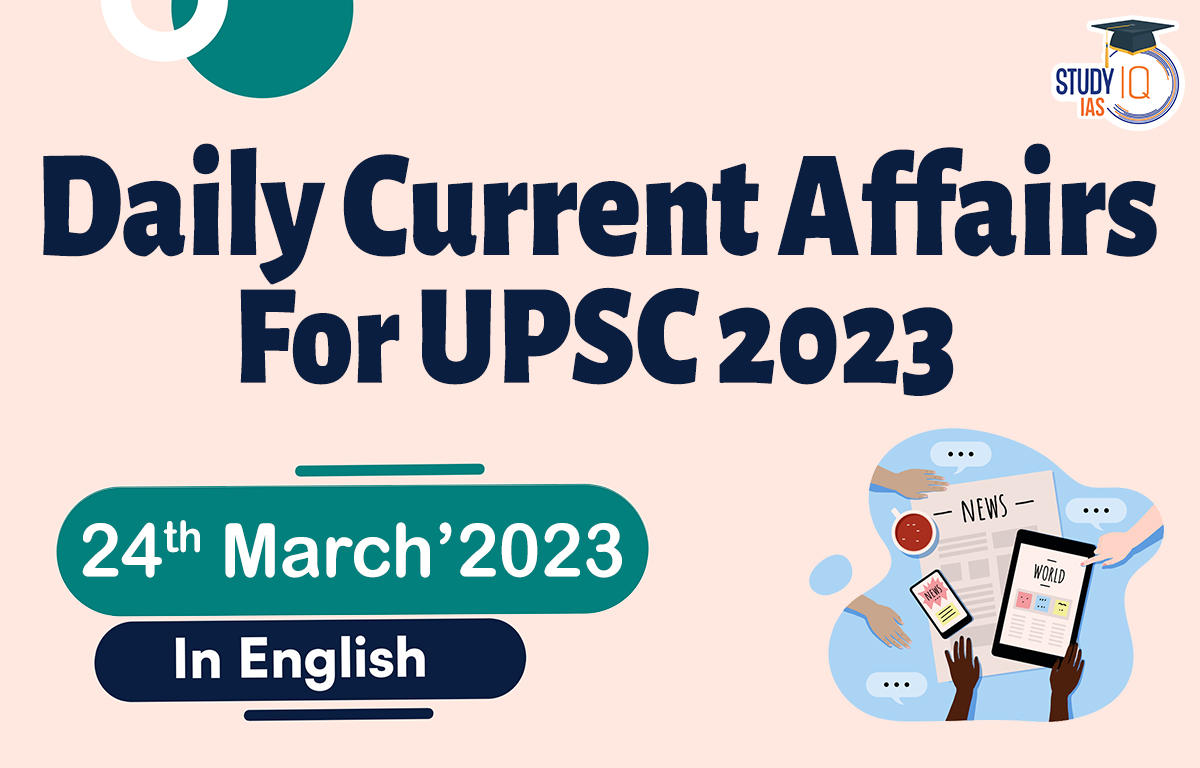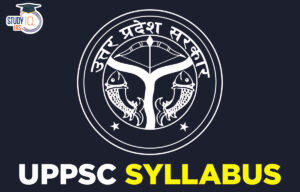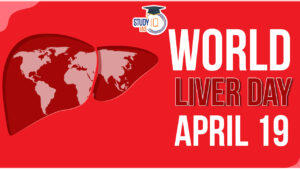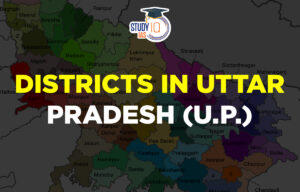Daily Current Affairs for UPSC 2023
Q) Which one of the following statement is correct about Right to Property in Indian Constitution?
- It is one of the legal rights under Part IV of constitution.
- It can only be curtailed by a constitutional amendment.
- It was made a legal right by the 42nd Constitutional Amendment.
- Right to property is protected against executive action.
Daily Current Affairs for UPSC – 23 March 2023
Explanation:
- Option (1) is incorrect: In the Indian Constitution, Article 300A guarantees the Right to Property to people. It falls in Part XII of the Constitution. It is not a fundamental right, but rather a legal right. The Goa Bench of the Bombay High Court recently held that a daughter’s right to family property will not extinguish even if dowry was provided to her at the time of marriage.
- Option (2) is incorrect: Right to Property can be regulated, abridged, or curtailed by law without the constitutional amendment. Article 300A states that no person can be deprived of his/her property save by the authority of law.
- Option (3) is incorrect: The Constitution of India originally provided for the right to property under Article 19(1)(f) and Articles 31. Article 19 guaranteed to all citizens the right to acquire, hold and dispose of property. Article 31 provided that “no person shall be deprived of his property save by authority of law.” It also provided that compensation would be paid to a person whose property has been taken for public purposes. The 44th Amendment of 1978 removed the right to property from the list of fundamental rights.
- Option (4) is correct: The right to property as a legal right protects private property against executive action but not against legislative action. In case of violation, the aggrieved person cannot directly move the Supreme Court under Article 32 (right to constitutional remedies including writs) for its enforcement. He can move the High Court under Article 226. No guaranteed right to compensation in case of acquisition or requisition of the private property by the state.
Q) With reference to the disqualification of a Member of Parliament, consider the following statements:
- The Supreme Court of India is empowered to reduce the period of a person’s disqualification from contesting elections.
- As per the constitution, if any independently elected member joins any political party, he is disqualified under the anti-defection law.
- A member is disqualified if he is convicted of an offence that results in imprisonment for at least two years.
Which of the statements given above is/are correct?
- 1 and 2 only
- 1 and 3 only
- 2 and 3 only
- 1, 2 and 3
Explanation:
- Statement 1 is incorrect: Recently, an eminent politician has been sentenced to two years jail which shall lead to his disqualification as a Member of Parliament (MP). The Supreme Court has the power to stay not only the sentence, but also the conviction of a person. In some rare cases, conviction has been stayed to enable the appellant to contest an election. However, the Supreme Court has made it clear that such a stay should be very rare and for special reasons. Under Section 11 of the Act, the Election Commission of India may record reasons and either remove, or reduce the period of a person’s disqualification. The EC exercised this power for Sikkim Chief Minister P.S. Tamang, who served a one-year sentence for corruption, and reduced his disqualification so as to contest a by-election and remain in office.
- Statement 2 is correct: Commonly known as the ‘anti-defection law’, it was meant to arrest the practice of legislators from changing political affiliations during their term in office. The question of disqualification under the Tenth Schedule is decided by the Chairman in the case of Rajya Sabha and Speaker in the case of Lok Sabha. The present law does not specify a time-period for the Presiding Officer to decide on a disqualification plea. The decision of the Chairman/Speaker in this regard is subject to judicial review. A member incurs disqualification under the defection law:
- If he voluntarily gives up the membership of the political party on whose ticket he is elected to the House;
- If he votes or abstains from voting in the House contrary to any direction given by his political party;
- If any independently elected member joins any political party; and
- If any nominated member joins any political party after the expiry of six months.
- Statement 3 is correct: A person will be disqualified if convicted and sentenced to imprisonment for not less than two years. The person is disqualified for the period of imprisonment and a further six years. Under Section 8(4) of the RPA, legislators could avoid immediate disqualification until 2013. The provision said that with respect to a Member of Parliament or a State legislator the disqualification will not take effect for three months. If within that period, the convicted legislator files an appeal or revision application, it will not take effect until the disposal of the appeal or application. In Lily Thomas vs. Union of India, the Supreme Court struck down clause (4) as unconstitutional, thus removing the protection enjoyed by lawmakers.
Q) Consider the following statements about the Semiconductors:
- Semiconductors are materials that have double the electrical conductivity of a normal conducting material.
- At present, India imports almost all of its semiconductor chips from China.
- Under the Modified Special Incentive Package Scheme, a subsidy of up to half of the capital expenditure is given for setting up semiconductor manufacturing units.
Which of the statements given above is/are not correct?
- 1 only
- 1 and 2 only
- 2 and 3 only
- 1, 2 and 3
Explanation:
- Statement 1 is incorrect: Semiconductors are materials that have electrical conductivity between that of a conductor (e.g., Copper) and an insulator (e.g., Rubber). This means that semiconductors can conduct electricity, but not as well as conductors, and they can also act as insulators, but not as effectively as insulators. This property allows for the creation of electronic components with specific electrical properties, enable the design of complex circuits and devices. Semiconductors are typically made from materials such as silicon, germanium, and gallium arsenide.
- Statement 2 is incorrect: India imports 100 percent of its semiconductor chips from Taiwan, Singapore, Hong Kong, Thailand, and Vietnam. Semiconductor manufacturing in India would not only help domestic companies reduce dependence on imports, but also generate revenue from exports to other countries. Semiconductor chips are the lifeblood of the modern information age. They enable electronic products to compute and control actions that simplify our lives. Semiconductors are essential to drive the ICT (Information and Communications Technology) development in the country, which is critical for India to benefit from the 4th industrial revolution. They are used in critical infrastructures such as communication, power transmission, etc., that have implications for national security.
- Statement 3 is incorrect: Modified Special Incentive Package Scheme (M-SIPS) provides financial incentives for setting up new semiconductor manufacturing units in the country. Under the scheme, companies can get a subsidy of up to 25 percent of their capital expenditure. Semiconductors are the basis transistors, diodes, integrated circuits, microprocessors, and memory chips which are used in electronic devices such as computers, smart phones, televisions, radios, and more. They are used in manufacture of solar cells, which convert sun light into electricity. They are used in light-emitting diodes (LEDs) to produce energy-efficient lighting. They are used in power-electronics, which are used to control and convert electrical power.
Q) With reference to the drug Patents in India, consider the following statements:
- Secondary patents are filed on the formulations of the active ingredients.
- The Ministry of Science and Technology administers the Indian Patents Act of 1970.
- At present there is no legal provision in the India to stop ever greening of the patents.
Which of the statements given above is/are correct?
- 1 only
- 1 and 2 only
- 1 and 3 only
- 2 and 3 only
Explanation:
- Statement 1 is correct: Patent is a form of Intellectual Property Right (IPR) in which an inventor agrees to disclose the entire invention, in return for an exclusive right to stop others from using or making that invention. The inventor must apply to the government by describing the invention in writing to get a patent, through a patent application. If there is no pre-granted opposition to the patent, application will be accepted, and patent is granted. After being granted patent, the applicant can get a royalty from such inventions. Patents given for active ingredients are referred to as primary patents. Patents filed on other aspects such as different dosage forms, formulations, production methods etc. of the active ingredient are referred to as secondary patents.
- Statement 2 is incorrect: Indian Patents Act, 1970 governs patents in India. The Office of the Controller General of Patents, Designs and Trade Marks under the Ministry of Commerce and Industry is responsible for the implementing the Indian Patent Act. The law provides patent protection for pharmaceutical items and pharmaceuticals. Medicinal substances are patentable to the extent that patents would only apply to novel chemical entities. Section 3(d) of the Patents Act categorically states that salt forms and derivatives of known substances are not patentable. Known procedure is not patentable and cannot be regarded as distinct from the known substance. Inventions involving well-known chemicals cannot be patented unless the invention exhibits a significant increase in efficacy.
- Statement 3 is incorrect: Section 3 (d) of the Indian Patents Act, 1970 prevents the “evergreening of patents” by providing that only those pharmaceutical compounds that demonstrate significantly improved “efficacy” can be patented. Patent ensures that an innovation of an individual is protected at least for a certain period. It gives the inventor right to stop others from copying, manufacturing, selling or importing your invention without your permission. Scientific innovations by one inventor may inspire and motivate others to work in this regard. In absence of patents, discoveries would have been kept secret, stagnating industries and scientific research.
Q) GSTAT is the first appellate authority to hear cases related to GST.
- GSTAT is deemed the civil court under the Code of Civil Procedure, 1908.
- GSTAT is not empowered to cancel the registration of a company under the GST laws.
Which of the statements given above is/are correct?
- 1 and 2 only
- 2 only
- 1 and 3 only
- 2 and 3 only
Explanation:
- Statement 1 is incorrect: The GST Appellate Tribunal (GSTAT) is the second appeal forum under GST for any dissatisfactory order passed by the First Appellate Authorities. The National Appellate Tribunal is also the first common forum to resolve disputes between the centre and the states. Being a common forum, it is the duty of the GST Appellate Tribunal to ensure uniformity in the redressal of disputes arising under GST. The Goods and Services Tax (GST) Appellate Tribunal is likely to be headed by a former Supreme Court judge or a former Chief Justice of a High Court.
- Statement 2 is correct but statement 3 is incorrect: As per the Code of Civil Procedure, 1908, the GST Appellate Tribunal holds the same powers as the court and is deemed Civil Court for trying a case. The Tribunal also has the power to impose penalties, revoke or cancel registrations, and take such other measures as may be necessary to ensure compliance with the GST laws. The National Appellate Tribunal is situated in New Delhi, constitutes a National President (Head) along with 2 Technical Members (1 from Centre and State each). On the recommendations of the GST Council, the government can constitute (by notification) Regional Benches, as required. As of now, there are 3 Regional Benches (situated in Mumbai, Kolkata and Hyderabad) in India. The Government, on the recommendations of the GST council, has notified the number of State Benches.


 UPPSC Syllabus 2024, Check PCS Prelims a...
UPPSC Syllabus 2024, Check PCS Prelims a...
 World Liver Day 2024, Theme, History, Ce...
World Liver Day 2024, Theme, History, Ce...
 List of Districts of Uttar Pradesh, Map,...
List of Districts of Uttar Pradesh, Map,...

















